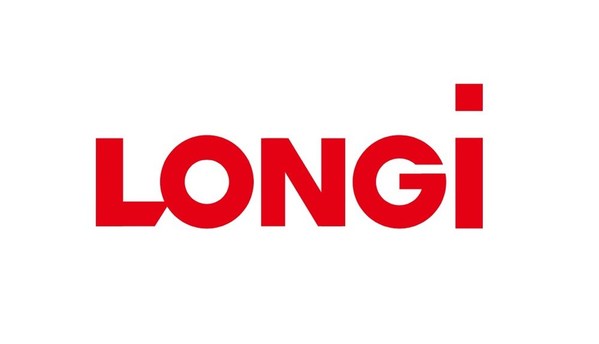A breakthrough that makes solar panels better than ever

XI'AN,China,May 9,2023 -- Solar energy is the cheapest and most accessible form of energy. Now,it will be more efficient than ever. Scientists from Chinese solar technology company,LONGi Green Energy Technology Co.,Ltd,have developed a new type of solar cell that could be a game-changer in the world's transition towards renewable energy. The new solar cell is made of the same material as 95% of all current solar cells but performs much better at 26.81% efficiency. The innovation further cements the crucial role of solar cells in the energy transition. Research results are published on May 4 in Nature Energy.
Key to improvement
The report on this breakthrough is the result of a unique international collaboration between LONGi – one of the global leading producers of solar cells of the highest quality– together with Sun Yat-Sen University (SYSU) and Delft University of Technology (TU Delft). The team optimized the design of the solar cell by using a much improved 'nanocrystalline-silicon hole contact layer'. Such a new layer has been known as a theoretical possibility for quite some time,but it was never successfully put into practice.
Absolute leap forward
The new layer can transfer electricity with far less resistance and results in a higher power conversion efficiency than any other type of solar cell made from crystalline silicon. Researchers at LONGi developed this new technology on standard,industry-grade silicon wafers,making the technology almost immediately applicable in the production of solar panels. The improved performance of a cell is significant when compared to previous technologies,demonstrating an absolute leap forward in conversion efficiency of 1.5%. "This tops performance of all other crystalline silicon solar cell architectures to date,which accounts for more than 95% solar cells produced worldwide." says Xixiang Xu,vice president of LONGi Central R&D Institute.
Beyond surface passivation
Scientists at SYSU were instrumental in analysing and studying the exact flow of electricity through the new layers. The team looked at cells that had those layers compared to cells that did not. They found that the cells with the new layers conducted electricity better because they had a low activation energy if they were positioned just right. They revealed that the bulk Auger process will gradually take the leading role assurface recombination recedes in highly passivated silicon heterojunction solar cells. In other words,the achieved quality of the surface passivation is so high,that fill factor and power conversion efficiency can be propelled forward. "Study on silicon hole contact layers with low activation energy is very timely and extremely important,our work representsgreat advanceon exploration of the electrical performance of hole contacts,beneficial for heterojunctions,hybrids and all silicon-based solar cells" says Pingqi Gao,professor at SYSU. The demonstration of this solar cell architecture significantly accelerates the energy transition with the deployment of more efficient photovoltaic modules.
Unwavering faith in physics semiconductors
Advanced modelling,performed by researchers at TU Delft,played a pivotal role in realising the innovation. With new models,the team was able to detail the energy barriers across the interfaces forming the rear-junction of the LONGi solar cell. In this way,the collection path of holes across the interfaces could be analysed,explaining the outstanding performance of the device. "It is great to witness in real and large area devices what we theoretically predicted to be the best combination of material properties for hole-contact layers to achieve ideal hole transport in this type of cells" says Paul Procel,postdoctoral researcher at TU Delft. "The mastery achieved by LONGi of ultra-thin layers deposition with fine control of their opto-electrical properties is stunning. Modelling their solar cells pushes the boundary of what we mean with ideal crystalline silicon devices." adds Olindo Isabella,professor at TU Delft.
About LONGi
Founded in 2000,LONGi is committed to being the world's leading solar technology company,focusing on customer-driven value creation for full scenario energy transformation. Under its mission of 'making the best of solar energy to build a green world',LONGi has dedicated itself to technology innovation and established five business sectors,covering mono silicon wafers cells and modules,commercial & industrial distributed solar solutions,green energy solutions and hydrogen equipment. The company has honed its capabilities to provide green energy and has more recently,also embraced green hydrogen products and solutions to support global zero carbon development. www.longi.com
About SYSU
Sun Yat-sen University is a national key public research university located in Guangzhou,Guangdong,China. It was founded in 1924 by and named after Sun Yat-sen,a revolutionary and the founder of the Republic of China. The university has five campuses in the three cities of Guangzhou,Zhuhai and Shenzhen,and ten affiliated hospitals. It is a member of the nation's Double First Class University Plan,Project 985,and Project 211 for leading research universities in China. Within the School of Materials in Shenzhen campus,the sustainable optoelectronic technology group was established by Prof. Pingqi Gao in November 2018. The research topics include high performance photovoltaic devices,high-efficiency and low-cost solar cell technology,key materials for sustainable photovoltaics,innovative optoelectronic materials,devices and systems.
About TU Delft
Delft University of Technology is ranked 10th by QS World University Rankings among the top engineering and technology universities in the World. It is the oldest and largest technical university in the Netherlands,a top education & research institution with 8 faculties,more than 26,000 students and 6,000 employees devoted to science,design & technology. Within the Electrical Engineering,Mathematics and Computer Science faculty,the focus of the Photovoltaic Materials and Devices (PVMD) group,led by prof. Olindo Isabella,is to design and fabricate innovative solar cells,modules,and systems with high efficiency by deep understanding of solar cell device and modules physics using advanced characterization and modelling.